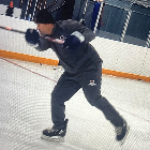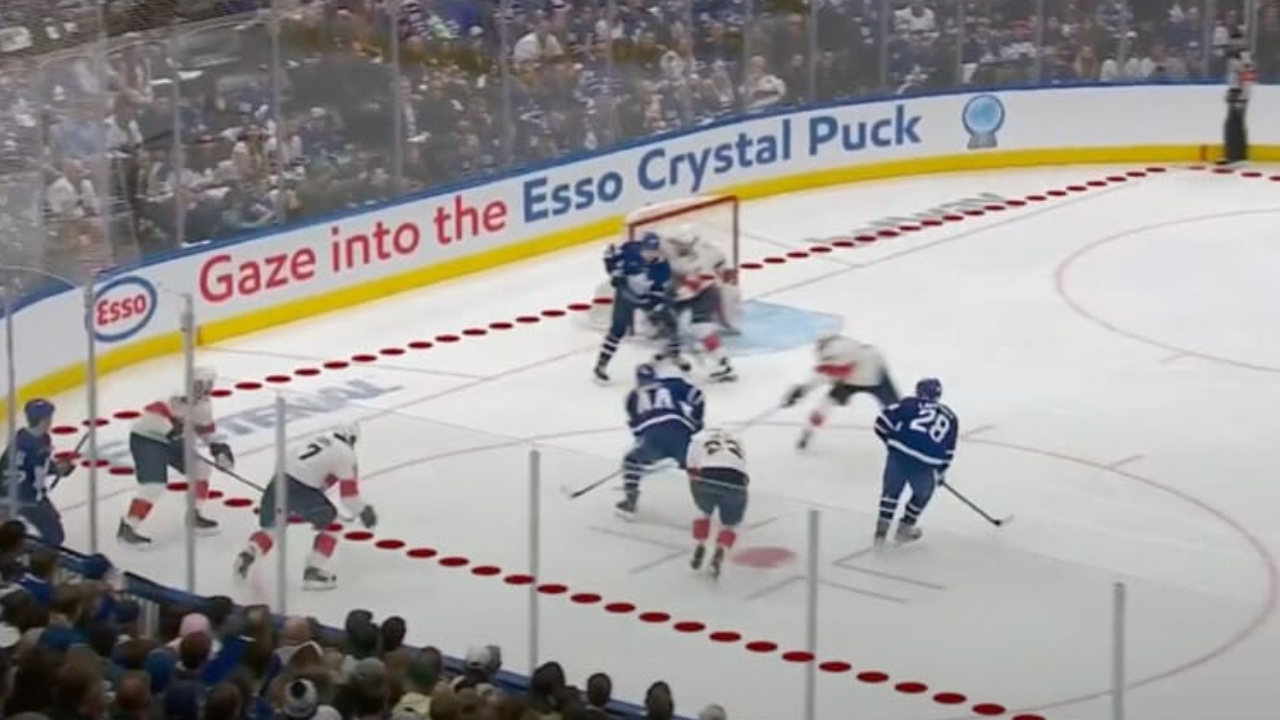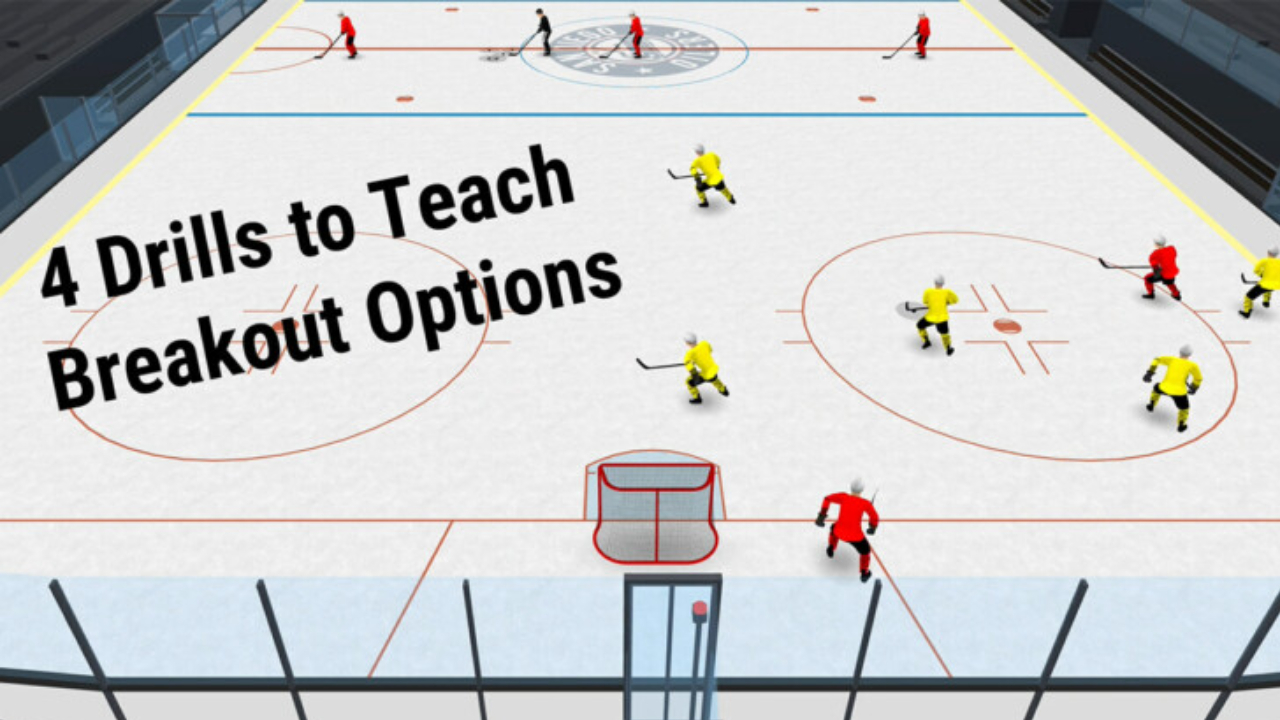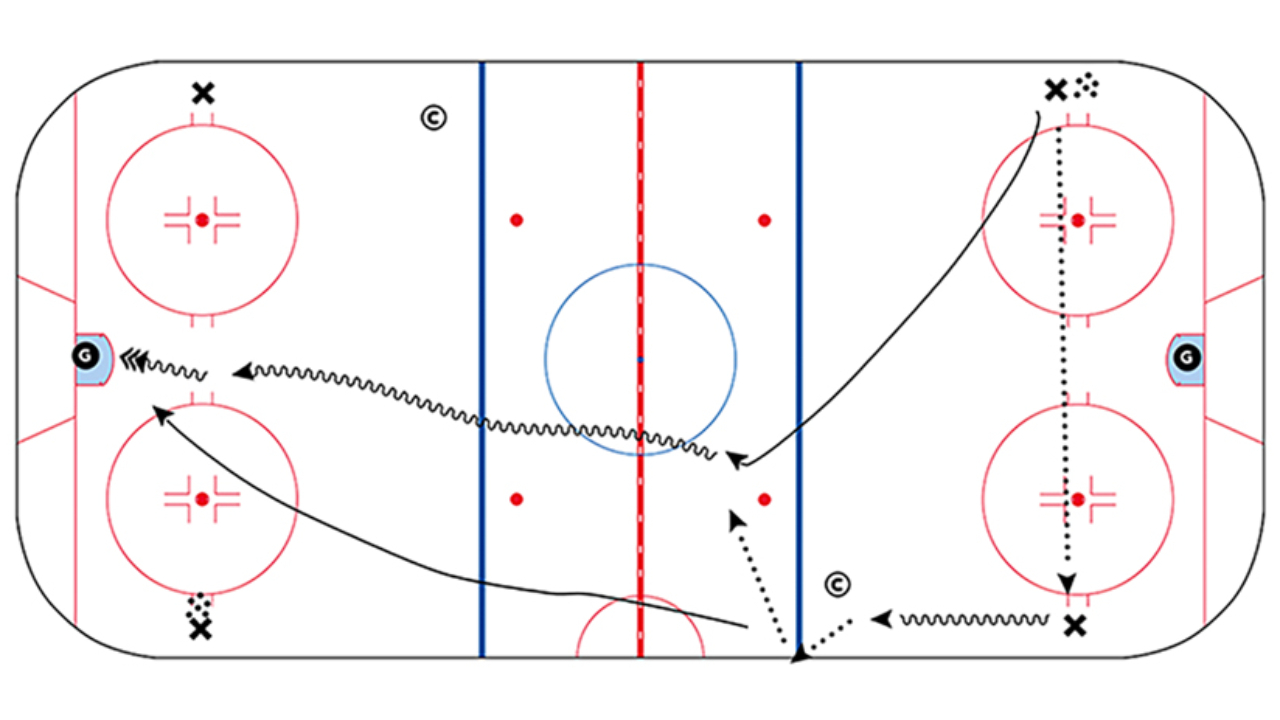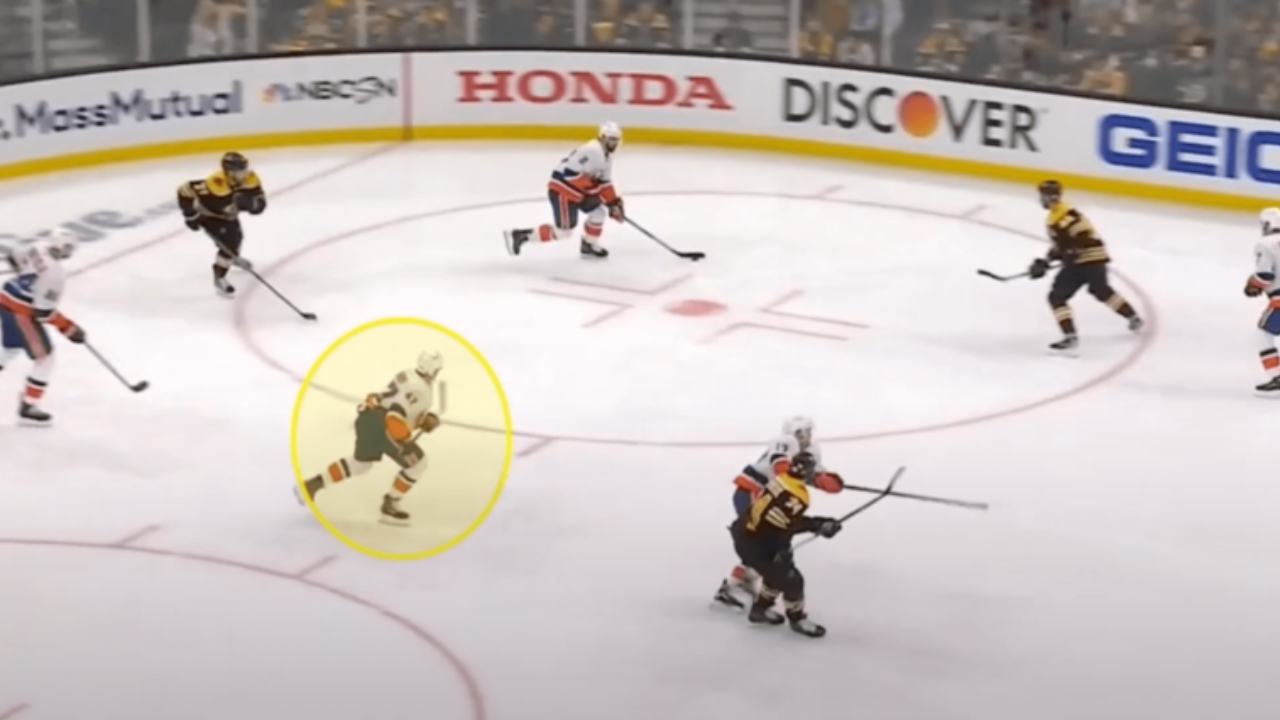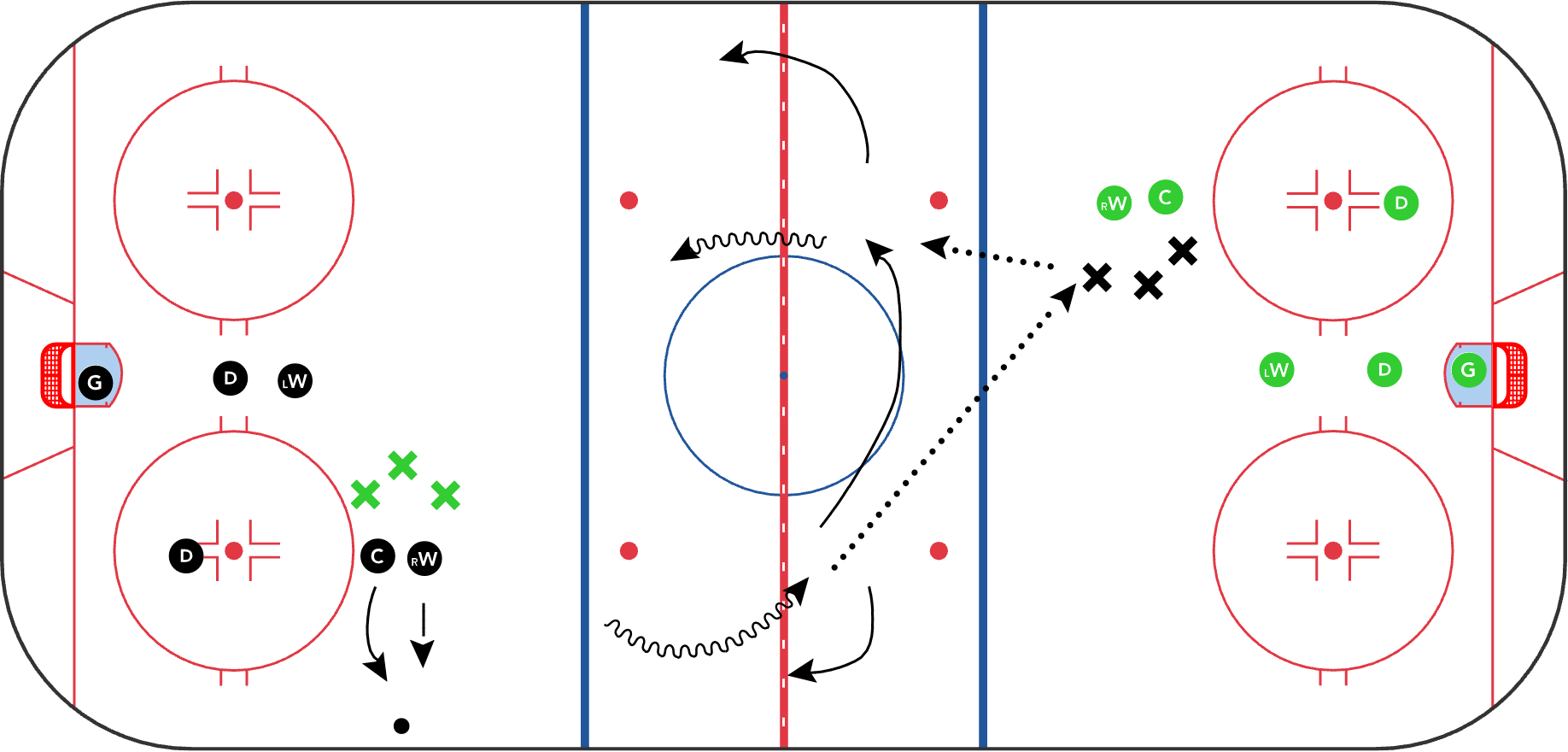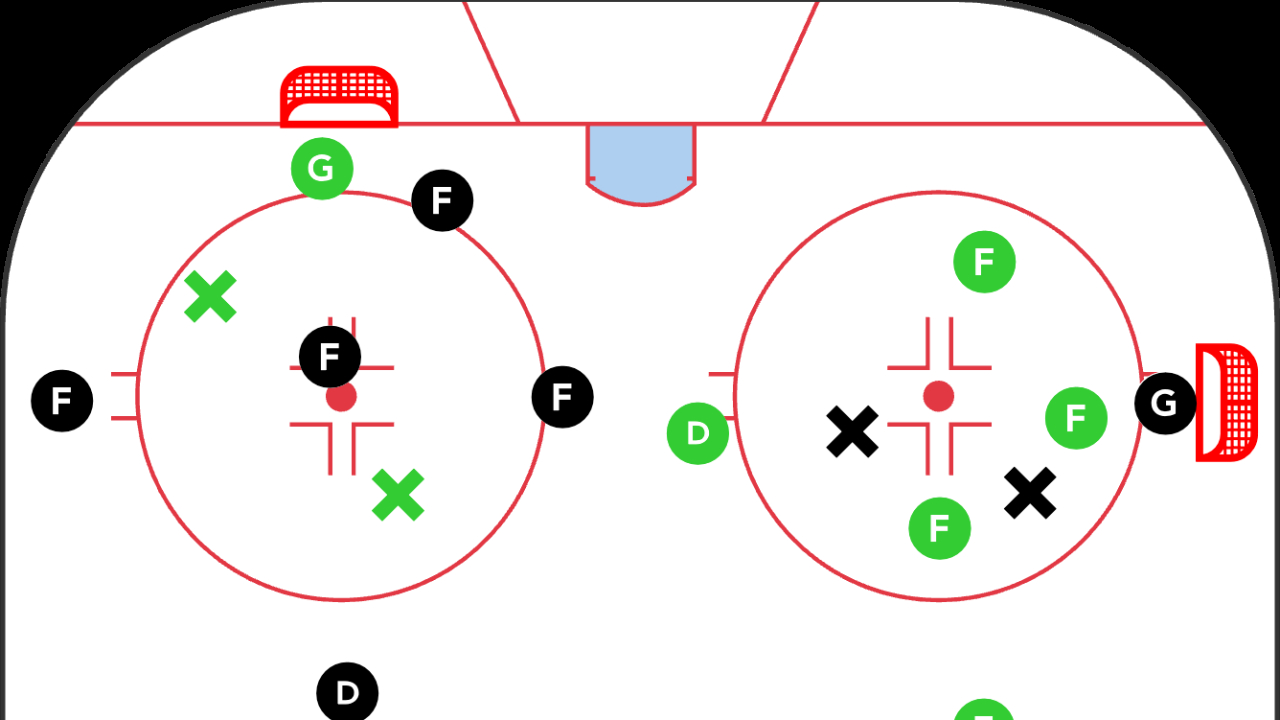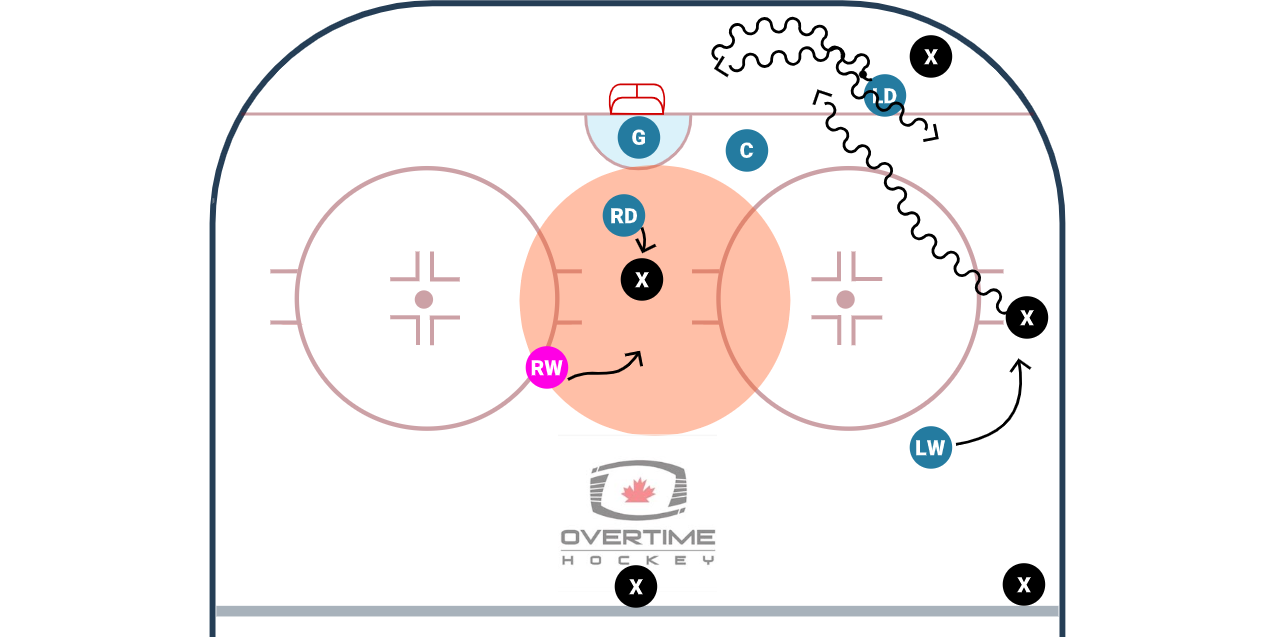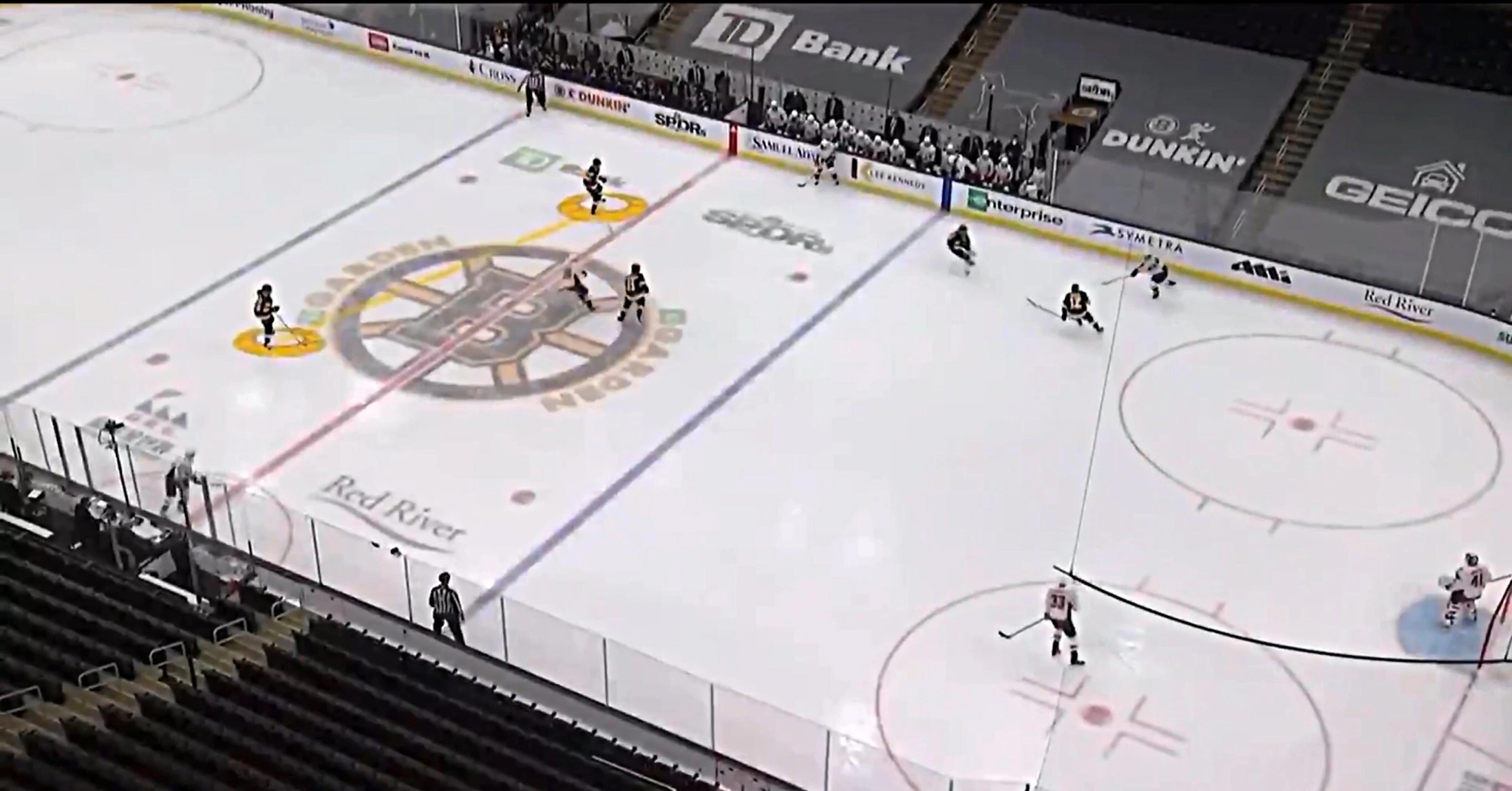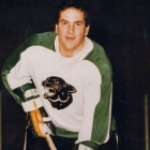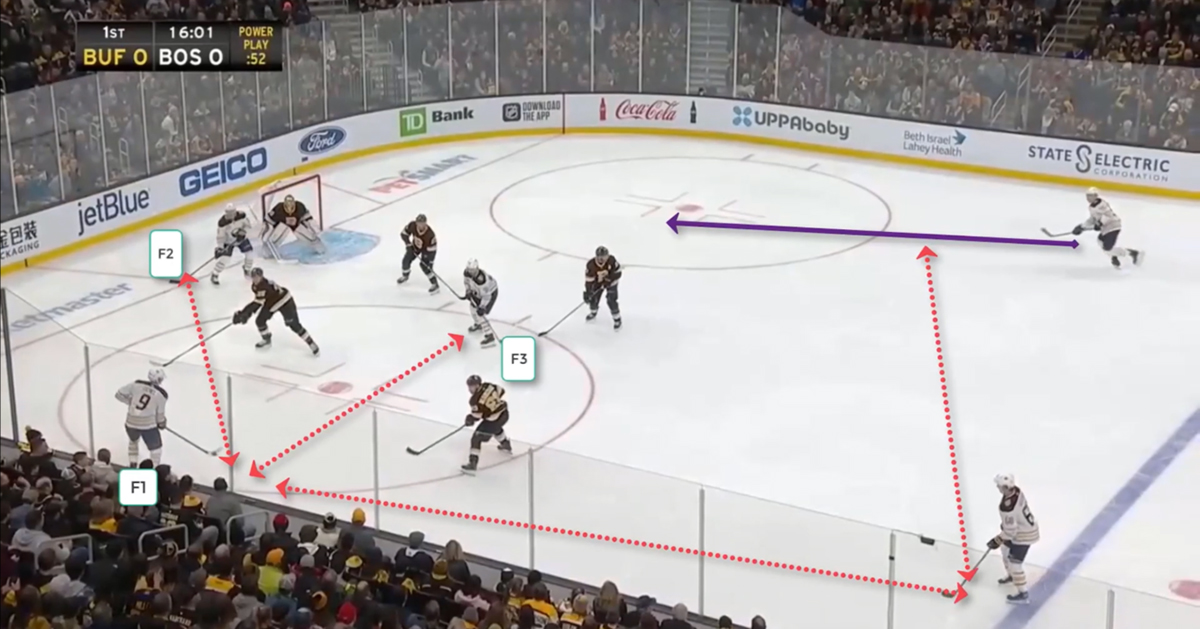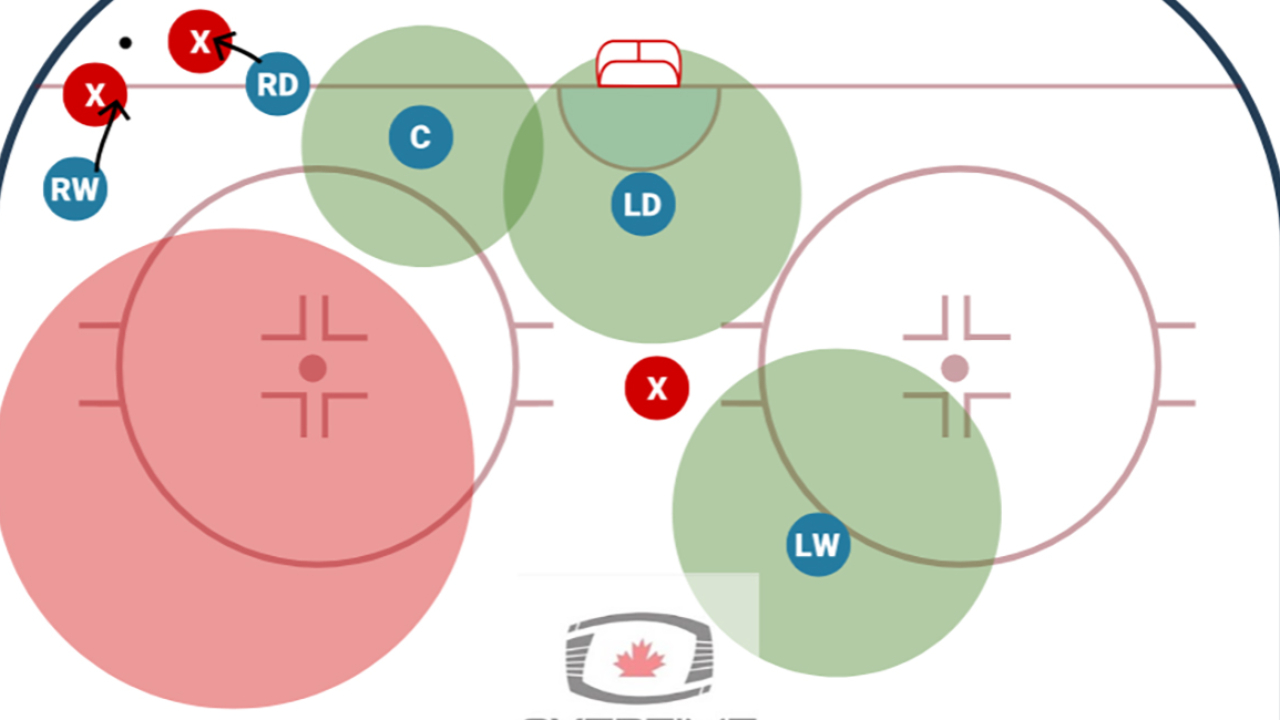
As I mentioned in other publications, I have been around the game a long time and if there was one thing that was over coached and under coached the same time, its the breakout.
Time and time again, I have coaches reach out concerned because their players can't seem to break the puck out but when we go through the film, it is not the breakout thats the problem, it's something else.
Don't cheat and read below- what do you think it is? Comment below what your thought was.
If your guess was the Defensive Zone Coverage/Set Up I am right there with you. I cannot tell you the amount of times I am watching a game or film with a coach and the problem is right there in front of them- players missing their assignment. It is very easy for us as coaches to get caught up in the big picture and if the puck isn't getting out of our zone we tend to jump right to the breakout as the culprit. So pump the breaks on the Countinuous Breakout drill for your next 90 minute practice and hear me out.
If you are coaching Junior, AAA, College or Pro, this probably is not for you. I am putting this together for the A or AA coach, perhaps a very good house league coach, however, even our AAA groups need to go back to the basics every now and then. The D Zone is a complicated territory and I find from my own experience we tend to over complicate it even more. For instance, teaching a Low Sag Zone or Hybrid Man/Zone Coverage to a 12 year old A player may do more harm than good. I mean it sounds cool and all but it doesn't look cool when no one has a clue what they are doing.
There are endless Breakout looks Rim, DtoD, Wheel, Reverse etc. but none of that does any good if players can't win the puck or worse get the puck and have no where to go with it.
So what do I recommend? I recommend a basic Defensive Zone Set Up I like to call "Dots" with the younger players. Simply put, Wingers look after above the dots, Centre and Defense work below the dots. As a nod to my comment above, it is a Hybrid set up where players do have "Man" responsibility but they also cover a zone. As you can see below, the players pressuring the puck have man coverage and the players who are off-puck support have zone responsibilities.


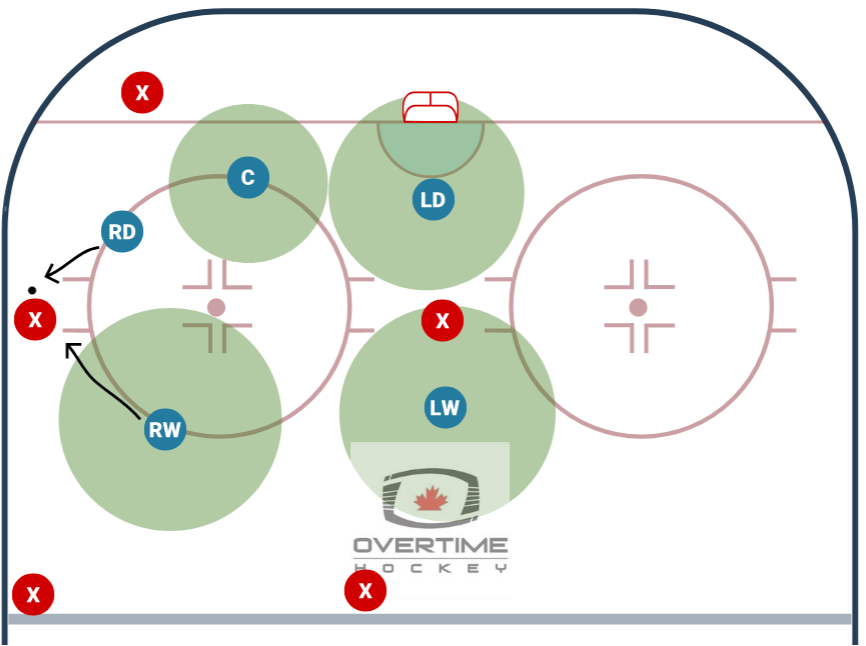
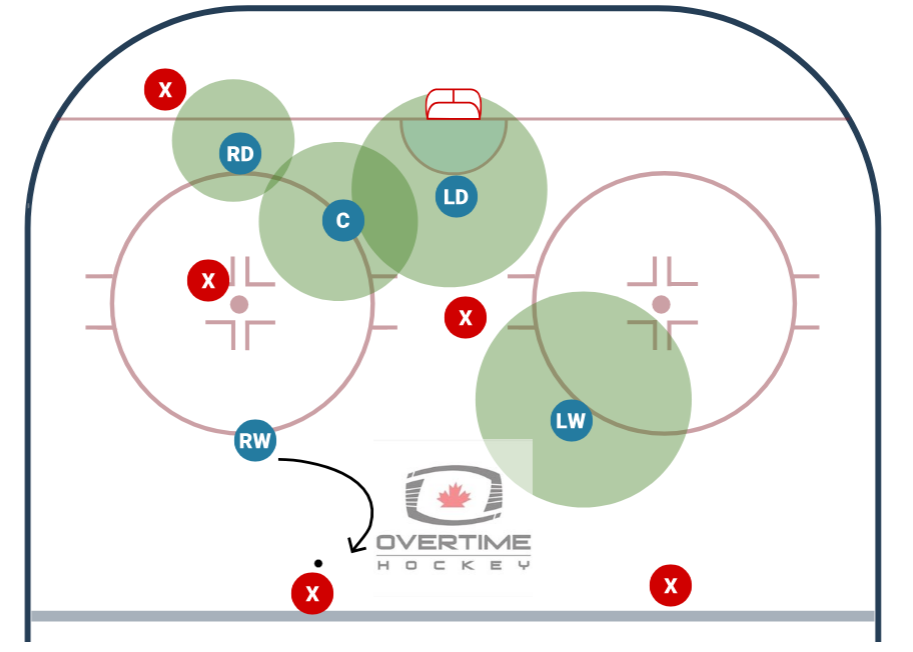
I find this the easiest to teach younger and less developed players because it clearly defines what we call "GPS" locations, spots on the map where the players should be. By giving them visual cues of the responsibility they have, they can see, tangibly, the area where they live.
So how does this correlate to a bad breakout? Because players leave their responsibility to go help where they don't need to. Mostly with the Strong Side Winger (SSW) going below the dots to support the Strong Side Defenseman (SSD). So here are the roles black and white:
- SSW: On puck above the dots, lane to point when puck is below dots
- WSW: Head on a swivel, protecting and weak side threat above the dots
- Centre: Responsible for the lane between the puck and the post. They are on-puck support if SSD gets out numbered but they always stay in the puck-to-post lane.
- WSD: Net front zone, good active stick on any opponents in front. Because the Centre has puck-to-post coverage the net front coverage can stretch out to wherever the opponent is in the house, just not past the weak side post.
Now that we have the responsibilities sorted out, lets tie this in to how breakouts are affected. If the SSW does drop down low to help we now have to win potentially 3 battles just to get the puck out of our zone, not to mention the void that the SSW left on the half wall creates confusion so often the WSW jumps over to help and now no one is in a proper route, the opponent has way more open ice than they should and chaos ensues.
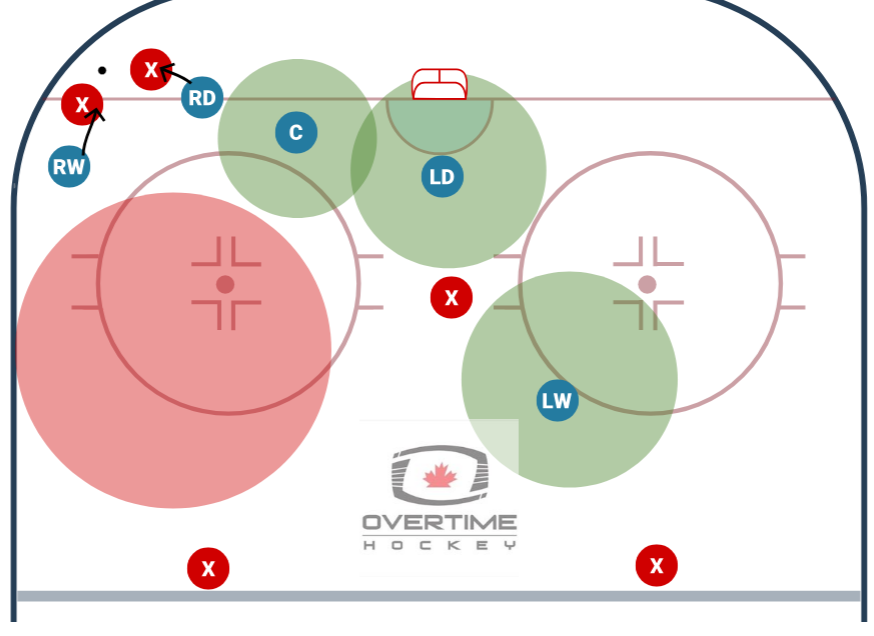
The course correction should be that the Wingers stay above the dots at all times, trust our D and C to work to get possession and ideally work the puck around to the weakside away from traffic but also be ready for a Hail Mary thrown up the wall. The Centre will be low so they only have one read to make- the weakside winger, if they have no time and space, glass and out or throw the puck to the weak side and let the WSW go get it. Point is, we have a SSW who is in the right spot and ready to make a play.
As players get older (and even some younger ones) can benefit from a mini prescout or in-game adjusment on the opponents defense, are they pinching? Do our wingers have more time than they thought or can we catch a pinching defenseman with a glass and out pass?
As for how to practice this- although I love me a good Continuous Breakout and snapping the puck around with sty, we need to give the players gamelike reps. Here is how I run our Dzone to BO Transition:
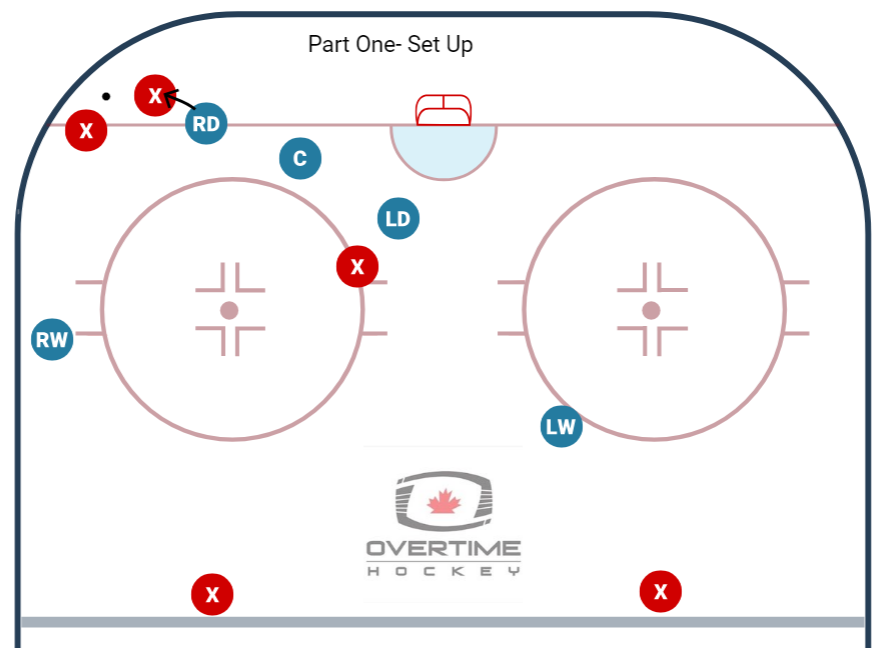
Set up players as shown, on whistle D takes body (or pinch against boards if it is non-bodychecking division) let the play develop and keep going until the defensive team wins possession of the puck. Have them work the puck to the weak side to kick off the breakout, that is the best case scenario we want so rep it. After a few, have them work in the SS chip- D works the puck to the SSW who makes a quick read to the weakside (shoulder check before they get possession and then another read after they get it) and if no play, glass and out. Once the WSW sees the glass and out is in play, they skate hard to the WS for puck retreival and all players go into lane filling mode.
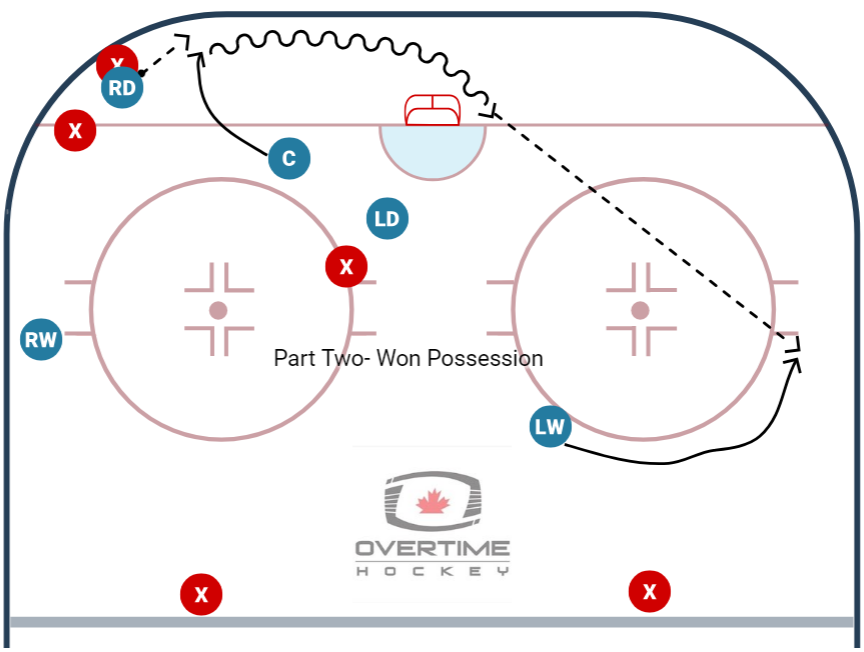
So to summarize, establishing good habits in the defensive zone will contribute directly to the players being able to break the puck out effectively. Continue to run the flow based breakout drills so the players can continue to develop their awareness, routes and chemistry, but it is very important that you spend time on the defensive zone set up prior to the breakout. I also strongly encourage coaches to film their games (and even some practices) as players can often benefit from the visual cues they see on film.
